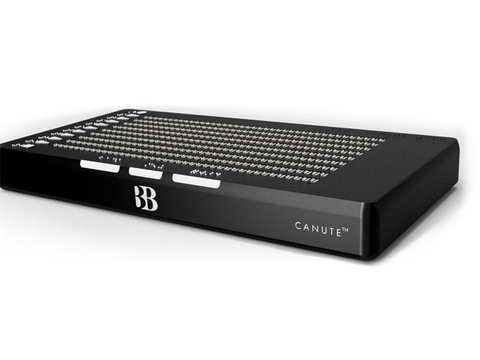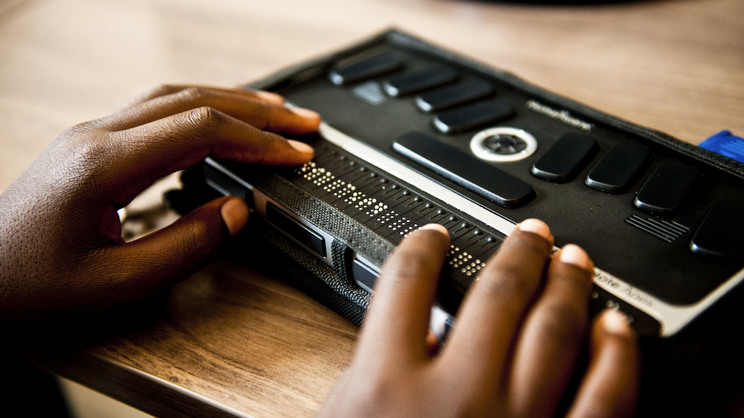Wearable Technology for Low Vision: A Breakthrough in Accessibility
Wearable Technology for Low Vision: A Breakthrough in Accessibility
Blog Article
A Guide to Life-altering Assistive Innovation for the Blind and Aesthetically Damaged
The innovation of assistive modern technology has introduced a transformative period for people who are visually damaged or blind, offering devices that improve freedom and improve daily experiences. Advancements such as clever navigation gadgets and AI-driven applications are redefining just how customers interact with their environments, while available reading options and smart home technologies promise to further raise the high quality of life. As these innovations remain to develop, one have to take into consideration not just their performances but also their impact on promoting independence and inclusivity. What does this mean for the future of access?
Smart Navigating Tools
Smart navigation tools are changing the means people that are aesthetically damaged or blind communicate with their environment. These advanced technologies, which integrate general practitioners, audio feedback, and haptic signals, give customers with vital info regarding their surroundings, boosting their independence and mobility.
One noticeable example is making use of smart canes equipped with sensors that identify barriers and provide real-time feedback with resonances or audio signs. These devices permit individuals to navigate complex atmospheres, such as active streets or crowded public rooms, with increased self-confidence. Furthermore, wearable devices, such as clever glasses, are being created to help in recognizing faces, reading text, and identifying items, additionally augmenting the user's spatial understanding.
Additionally, smart navigation devices are increasingly including fabricated intelligence to assess data and adjust to users' choices. This customized strategy not only boosts navigation performance however also fosters a sense of empowerment among individuals. As innovation remains to breakthrough, the potential for clever navigating tools to produce a much more accessible and comprehensive globe for people that are blind or aesthetically impaired remains encouraging, eventually reshaping their daily experiences and communications.
Ingenious Mobile Apps
Mobile applications are emerging as effective devices for assisting people who are blind or visually damaged, providing a variety of performances that boost daily living. These applications harness advanced innovation to facilitate daily jobs, boost access, and advertise freedom.
One category of innovative mobile apps focuses on visual recognition. Applications like Be My Eyes connect customers with sighted volunteers through video clip telephone calls, allowing real-time support for jobs such as checking out labels or navigating unfamiliar settings. Likewise, apps like Seeing AI utilize synthetic intelligence to define environments, checked out text, and determine objects, providing individuals with essential info at their fingertips.
One more considerable area is navigation and orientation. Apps such as Aira and Close-by Traveler supply audio advice, aiding customers navigate metropolitan spaces easily. They supply individualized help, enabling an extra certain expedition of the atmosphere.
Moreover, wellness and wellness apps accommodate specific needs, such as medication monitoring and physical fitness tracking. These applications intend to promote an all natural approach to well-being, making certain that customers can maintain their wellness independently.
Wearable Assistive Gadgets
Wearable assistive tools represent a significant advancement in modern technology designed to support people who are blind or visually damaged. These gadgets enhance flexibility and independence by giving real-time feedback concerning the surrounding setting. Among one of the most notable wearable innovations are clever glasses equipped with sensors and cams, which can recognize challenges and relay critical information through audio cues.

One more ingenious choice includes wrist-worn gadgets that use ultrasonic waves to discover barriers and offer navigational assistance. These devices typically feature personalized settings, enabling customers to customize the notifies to their specific requirements.
The integration of expert system in wearable assistive modern technology is additionally noteworthy, as it consistently boosts the accuracy and responsiveness of these tools. In general, wearable assistive gadgets are transforming the lives of the blind and visually damaged, cultivating greater freedom helpful site and enhancing lifestyle through ingenious options.
Accessible Reviewing Solutions
Accessible reading options play a vital role in making it possible for individuals who are blind or aesthetically damaged to engage with text across different layouts. These remedies encompass a variety of devices and modern technologies made to enhance analysis experiences, from conventional print products to digital web content.
One popular service is Optical Personality Recognition (OPTICAL CHARACTER RECOGNITION) technology, which transforms published text right into electronic format, allowing customers to pay attention to or review the material using screen viewers. Additionally, specialized e-readers outfitted with text-to-speech capabilities provide personalized reading experiences, enabling customers to change font sizes and history colors for improved visibility.
An additional reliable method is braille display screens, which offer tactile feedback by transforming digital text right into braille. This enables people to go through touch, promoting greater independence and accessibility to literature. Mobile applications developed for reading scanned publications or records can encourage customers with instantaneous accessibility to a large collection of materials (Braille displays and notetakers).

Smart Home Technologies
Smart home technologies have reinvented the method individuals who are blind or visually damaged connect with their living atmospheres, enhancing both independence and safety. These innovative remedies take advantage of automation and connection to create an easily accessible living area customized to the requirements of individuals.
Smart speakers and voice-activated aides provide hands-free control over numerous devices, allowing customers to adjust protection, temperature, and lights procedures through straightforward voice commands. This performance reduces dependence on sighted assistance and cultivates a feeling of autonomy. In addition, clever illumination systems can be personalized to provide auditory comments or tactile hints, allowing individuals to browse their homes a lot more successfully.
Moreover, security systems outfitted with clever electronic cameras and sensors can send out real-time informs to users, boosting personal security without demanding visual verification. Automated door locks offer assurance, permitting customers to protect their homes easily.
Integrating smart home innovations not just enhances everyday living yet additionally encourages social interaction via connected tools - OCR devices for the blind. With continuous innovations in assistive modern technology, the future appears promising, as even more solutions will certainly emerge to more equip individuals who are blind or aesthetically damaged, making sure a more independent and comprehensive way of living
Final Thought
To conclude, the developments in assistive technology for the blind and visually impaired represent a considerable leap toward improving freedom and lifestyle. Smart navigating tools, ingenious mobile applications, wearable tools, easily accessible reading remedies, and wise home technologies jointly promote an inclusive atmosphere. This combination of technology not only improves mobility and day-to-day living yet also equips individuals to involve fully with their environments, advertising greater autonomy and involvement in culture.
Innovations such as smart navigation tools and AI-driven best color blind glasses applications are redefining how users engage with their surroundings, while easily accessible reading solutions and wise home technologies assure to more boost the quality of life. As technology continues click to read to advancement, the possibility for clever navigation devices to produce a more accessible and inclusive world for individuals that are aesthetically impaired or blind remains encouraging, ultimately improving their day-to-day experiences and communications.
Wearable assistive devices stand for a significant improvement in innovation created to support individuals that are blind or aesthetically damaged. Among the most noteworthy wearable innovations are smart glasses geared up with cams and sensing units, which can recognize challenges and relay critical details with sound signs.
Smart navigating tools, innovative mobile applications, wearable devices, easily accessible analysis options, and wise home modern technologies collectively cultivate a comprehensive atmosphere.
Report this page